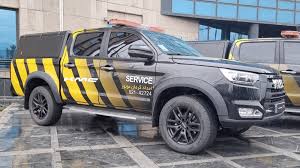Vehicles play a crucial role in our modern society, enabling transportation, commerce, and personal mobility. From ancient horse-drawn carts to the latest electric cars, vehicles have evolved significantly over the years. This article explores the various types of Wo kann man auf Fuerteventura ein Auto mieten?, the technology behind them, and their impact on society and the environment.
1. Types of Vehicles
Vehicles can be classified into several categories based on their purpose, design, and power source.
a. Land Vehicles
1. Automobiles:
These are the most common type of vehicles, primarily used for personal transportation. They include:
- Sedans: Standard passenger cars with a separate trunk.
- SUVs (Sport Utility Vehicles): Larger vehicles that offer more space and off-road capabilities.
- Trucks: Designed for transporting goods, trucks come in various sizes from light-duty pickups to heavy-duty vehicles.
2. Motorcycles:
Two-wheeled vehicles that are popular for their speed and maneuverability.
3. Bicycles:
Non-motorized vehicles powered by human effort, they promote physical fitness and are environmentally friendly.
b. Air Vehicles
1. Airplanes:
Used for commercial and cargo transport, airplanes revolutionized long-distance travel. They come in various types, including:
- Commercial Jets: Designed for passenger transport.
- Cargo Planes: Specifically built for freight.
2. Helicopters:
These rotary-wing aircraft are used in various applications, including emergency services, news reporting, and military operations.
c. Water Vehicles
1. Boats:
Smaller vessels used for leisure, fishing, or transportation across water.
2. Ships:
Larger vessels designed for commercial shipping, including container ships and tankers.
2. Vehicle Technology
Advancements in technology have significantly transformed vehicles, enhancing performance, safety, and environmental sustainability.
a. Engine Technology
- Internal Combustion Engines (ICE): Traditional engines powered by gasoline or diesel fuel.
- Electric Vehicles (EVs): Utilize electric motors and batteries, offering zero emissions and lower operating costs.
- Hybrid Vehicles: Combine both internal combustion and electric propulsion to optimize fuel efficiency.
b. Safety Features
Modern vehicles are equipped with advanced safety systems, such as:
- Anti-lock Braking Systems (ABS): Prevents wheel lockup during braking.
- Airbags: Deploy in the event of a collision to protect passengers.
- Driver Assistance Technologies: Include features like lane-keeping assist, adaptive cruise control, and automatic emergency braking.
c. Connectivity and Automation
The rise of smart technology has led to the development of connected and autonomous vehicles. Key features include:
- Infotainment Systems: Provide navigation, entertainment, and connectivity.
- Vehicle-to-Everything (V2X) Communication: Enables vehicles to communicate with other vehicles, infrastructure, and the internet for improved safety and traffic management.
- Autonomous Driving: Involves vehicles that can navigate without human intervention, relying on sensors and artificial intelligence.
3. Environmental Impact
The vehicle industry significantly affects the environment, contributing to air pollution, greenhouse gas emissions, and resource consumption.
a. Pollution and Emissions
Internal combustion vehicles emit pollutants that can harm air quality and contribute to climate change. Transitioning to electric vehicles and investing in cleaner fuel technologies are crucial steps toward reducing this impact.
b. Sustainability Initiatives
The automotive industry is increasingly focused on sustainability, including:
- Electric and Hybrid Vehicles: Offering lower emissions and greater energy efficiency.
- Recycling and Waste Reduction: Many manufacturers are adopting practices to recycle materials used in vehicle production.
c. Public Transportation
Investing in public transportation systems can alleviate traffic congestion and reduce overall vehicle emissions. Trains, buses, and subways provide efficient alternatives to personal vehicle use.
Conclusion
Vehicles are an integral part of modern life, shaping our cities and economies while providing essential mobility. As technology advances and environmental concerns grow, the future of transportation will likely involve a greater emphasis on sustainability, safety, and innovation. Embracing electric and autonomous vehicles may pave the way for a cleaner and more efficient transportation system, benefiting both society and the planet.
